Trends Report – Care Homes
Data published by the ONS predicates that the over 65’s population will rise to 18.2m by 2050, which is 25% of the total UK population. Strikingly, one in five of this group will be over 85 years old – with this in mind, the BCFA commissioned a market review of the care home sector. Bancmarketing was asked to investigate how the sector is adapting to the needs of our ageing population, identify specific trends and whether the COVID-19 pandemic has had a lasting effect on design.

Design Insider caught up with members, operators and designers working in the care sector to discuss how three of trends identified in the BCFA market review are reflected in real-world settings.
1 Digital technology
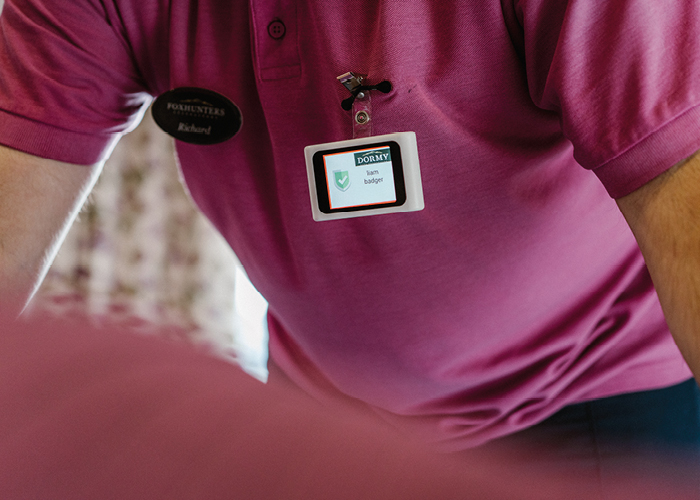
PinGo™ intelligent lapel badge by Eclipse Nursecall Systems (ENS)
The award-winning Foxhunters Care Community in Abergavenny was one of the first to use new ground-breaking technology developed by ENS. Helen Davies-Parsons, the CEO of Dormy Care Communities, has called the use of the PinGo electronic badges as a potential “game-changer” for the sector. She said, “Our aim is to provide the highest possible infection control standards across all of our care communities. This technology in Foxhunters takes it to another level and could be a real game-changer.
“PinGo alerts our visitors or team members if they enter a ‘red zone’ of less than 2m from another person wearing a badge and tracks their movements around the home, who they come into contact with, at what distance and for how long.
“And if someone tests positive for Covid-19, the system produces a ‘rapid-test’ list, ranking those most at risk of possible infection, enabling us to send instant alert messages to listed staff and contact visitors.”
She added, “As a care operator, we are always looking at innovative technology that supports our team members and our ladies and gentlemen. That is why this technology is a vital part of our package of Covid-19 infection control measures.”
2 Interior design
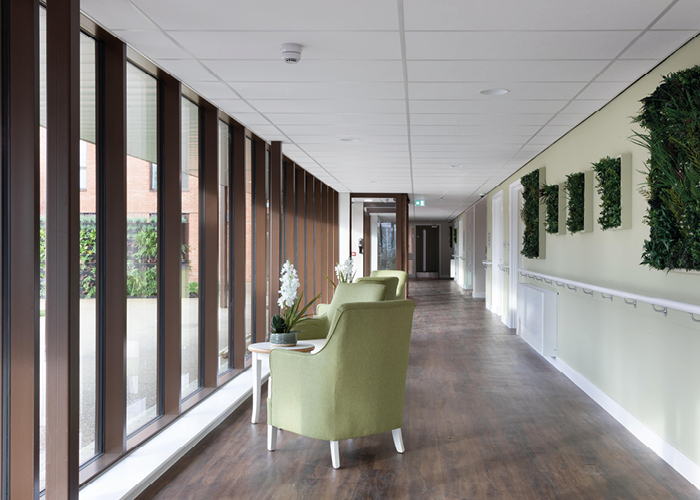
Award winning, New Lodge – Joseph Rowntree Housing Trust, New Earswick, York
The pandemic has meant design and infrastructure of care facilities are being reassessed. This includes everything from air conditioning, evaluating footfall flows and need for multiple entrance/exists, segmentation of open plan spaces, and repurposing outside spaces to allow safer visitations as well as selecting materials and furnishing to help infection control. Some changes such as social distance seating and removal of sofa’s will be short lived, but many changes will be longer lasting as they improve infection control and allow for segregation within the facility should future outbreaks occur.
Carmel Satterthwaite, business development manager at Teal Healthcare explains, “One of the main challenges facing interior designers in the care home sector is creating interiors which promote infection control whilst maintaining a homely atmosphere rather than an institutional space. Greater use of antimicrobial products and ability to clean and maintain surfaces easily will continue to be a priority. At Teal, our work with hospitals and physiotherapists engenders innovation and provides greater understanding when designing for care home sector.”
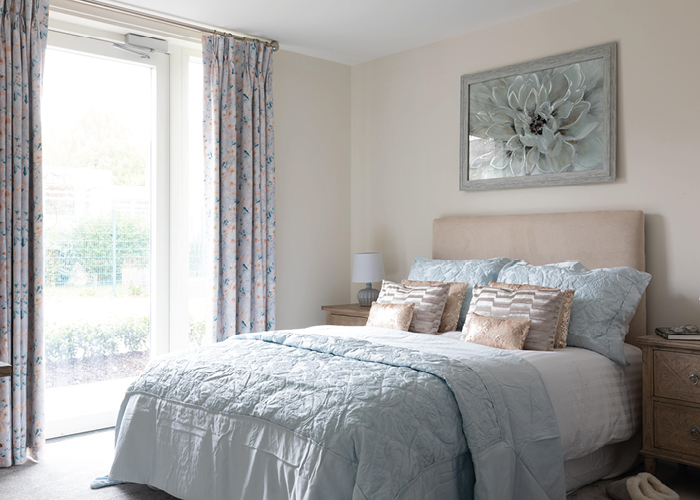
Award winning, New Lodge – Joseph Rowntree Housing Trust, New Earswick, York
International award-winning designer Diana Celella runs her own design practice The Drawing Room Interiors, is associate consultant at Hammond Care, Dementia Choice, as well as being Ex-President of SBID and Ex-Chairman of the Healthcare Design Panel (HDAC). Since opening JRT’s New Lodge care facility Diana has been delighted they have won three International Design Awards, she said. “Biophilic design has been proven to support wellbeing. Sustainability is also a consideration in product sourcing. But one of the biggest innovations in the care sector is the ability to specify bespoke design finishes at affordable prices and without the huge minimum orders of the past which leads to more creative and individual care home and retirement living Interiors.”
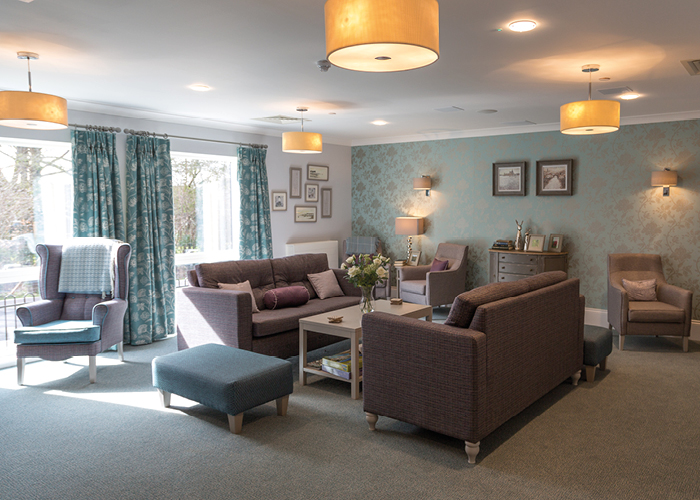
Dormy Care Communities, Bramshott Grange Care Home, Liphook Hampshire
Kelly Wilson Interiors (KWI) is founded on almost 30 years of combined healthcare and interior design experience. Passionate about creating interiors that are beautiful, KWI are on a mission to shrug off the old residential care stereo types. Design Insider think they’ve succeeded, as there is a definite wow factor when you walk into any one of the Dormy Care Communities homes. Every aspect is considered, furnishings are not only fit for purpose, but they are also contemporary, luxurious, and homely. “Our aim is to create an environment anyone would be proud to call home” explains Caroline Wilson, “I would encourage university interior design courses to include designing for this sector. To date there has been a huge learning focus on dementia care, which is invaluable. I believe this can be broadened as there is a genuine opportunity to promote interior design for elderly.”
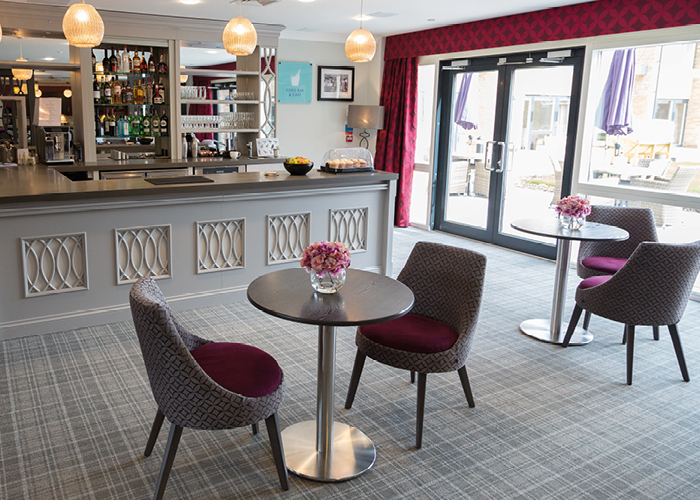
Dormy Care Communities, Bramshott Grange Care Home, Liphook Hampshire
Creating a domestic and therapeutic environment within a care setting is essential and Danfloor believe the carpet plays a key role in this, they also happened to be specified in each of the care homes we have featured.
Catherine Helliker, marketing manager at Danfloor explains their approach, “Healthcare carpet not only helps to reduce stress-related behaviours but also helps to reduce injuries as a result of falls and should, therefore, be considered as part of any design specification within a care home setting.
“The value-added features of specially engineered products are becoming more important now than ever. End users are more aware of how products can help with the fight against the spread of infection and those that aid with cleaning and maintenance. Sustainability is also key part of our product manufacturing.”
3 In-home services
TrustedCare is an online platform which offers free help and advice to people looking for care for themselves or a loved one. We caught up with Mark Walford, CEO and founder of Trusted Care to hear what trends he is seeing in people searching for elderly care services. He told us, “We have seen a definite rise in the number of companies providing live-in and homecare support. There are several reasons for this, which include people wanting to delay the move to an elderly care facility, it being less expensive than moving to a care home, and technological advancements which give families access to better monitoring and instant communication with carers. Providers include companies such as Home Instead, elder and Sierra Homecare.”
Despite the increase in care options for the elderly, the BCFA Care Home Market Review identifies that that over 110,000 additional beds above the industry trend projection are required by 2030.
To read all of the trends and the sector outlook email Nadia Hussain at Nadia@thebcfa.com for your copy of the BCFA Care Home Market Review.
Note, all BCFA research reports are available free to members.




